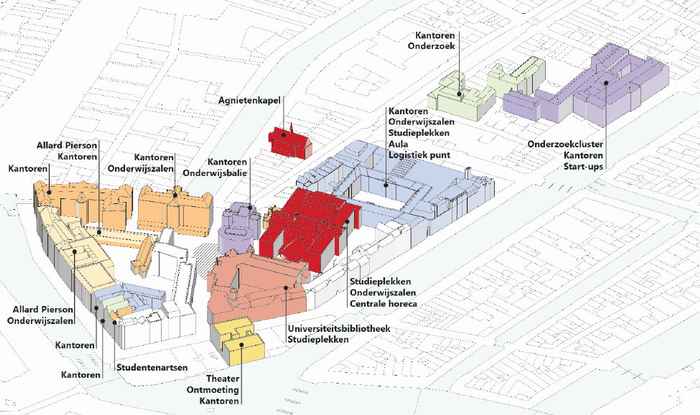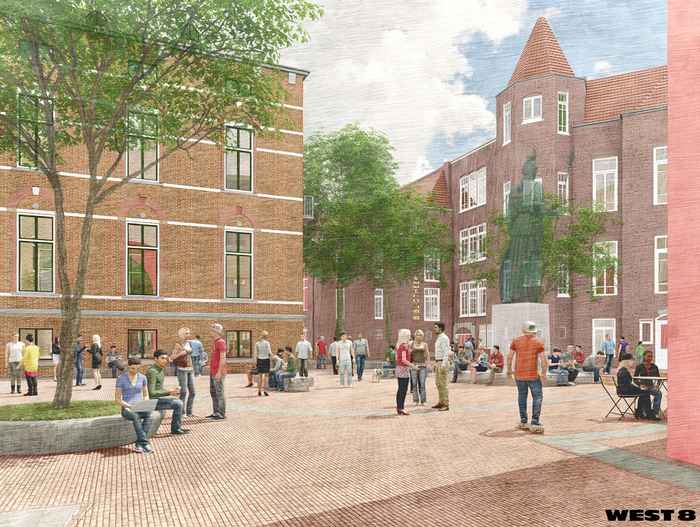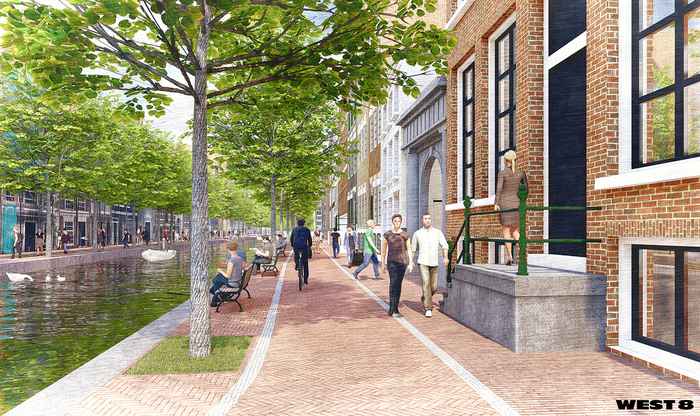Amsterdam city centre gets renewed historic University Quarter
12 March 2021
Amsterdam city centre is one of the most beautiful urban areas in the world, with its history, unique structure and countless monuments. However, the area is also under a great deal of pressure. The high concentration of city sights, shops, restaurants, sex-related businesses and coffee shops attracts huge numbers of tourists from home and abroad. The number of visitors increasing year on year before the coronavirus pandemic, and visitors can be expected to return in similar numbers as soon as this becomes possible, resulting in more of the same problems. In fact, in some parts of the centre there is now an economic monoculture. You might almost forget that people also live, work and study there.
Mayor of Amsterdam Femke Halsema: ‘Fewer and fewer Amsterdammers feel at home in their own city centre, and that’s not how things should be. The municipality is therefore working hard to give the city centre back to its residents, to ensure that it remains liveable and accessible and belongs to the people of Amsterdam, both now and in the future. The development of the University Quarter ties in well with this.’
In the coming years, the UvA will be investing heavily in and around the Binnengasthuis site in order to create an environment that promotes teaching and research, while also contributing to the cultural and intellectual climate in the city. As a result, the UQ will become the calling card of the University of Amsterdam.
Geert ten Dam, president of the UvA Executive Board: ‘We are proud of the plan we have produced. It will bring the rich history of the area back to life, using it as a foundation for the future. This area is the birthplace of the UvA and the cradle of academia in Amsterdam. It is not easy to adapt listed buildings to the modern requirements of a university or to do so in a sustainable manner. Major renovations and revisions will be needed to meet all the wishes and requirements. It is our belief and our experience that working together with the municipality and local residents will produce the best results, taking all the various interests into account.’
Working together
The municipality and the UvA – together with local residents and entrepreneurs, students and other interested parties – have drawn up a plan for the future, also known as the Strategic Master Plan. It provides clarity on the direction the area will take in its development in the years ahead. The accessibility, liveability and safety of the area will be improved, while acknowledging and accommodating its historic past. Some areas will be turned into low-traffic zones, there will be more room for cyclists and pedestrians and the amount of greenery will be increased. The intended result is a distinctive part of the inner city, full of courtyards and alleys, in which people live, work and study. The plan will be released for public consultation on 15 March. The public consultation period will last until 25 April.


